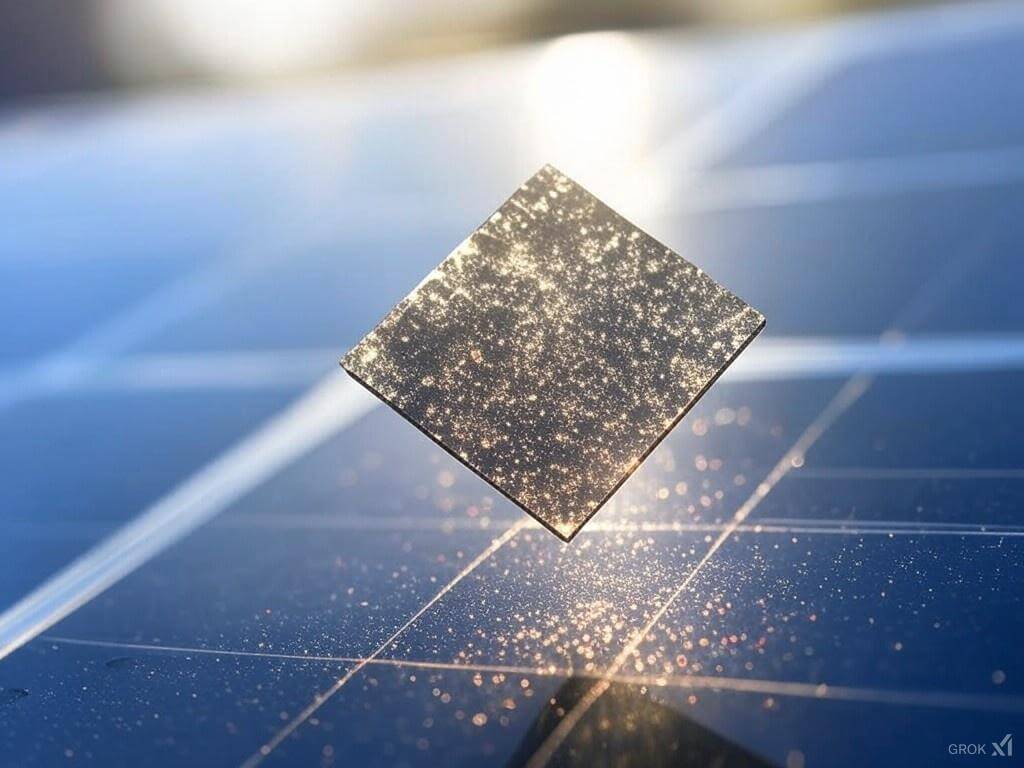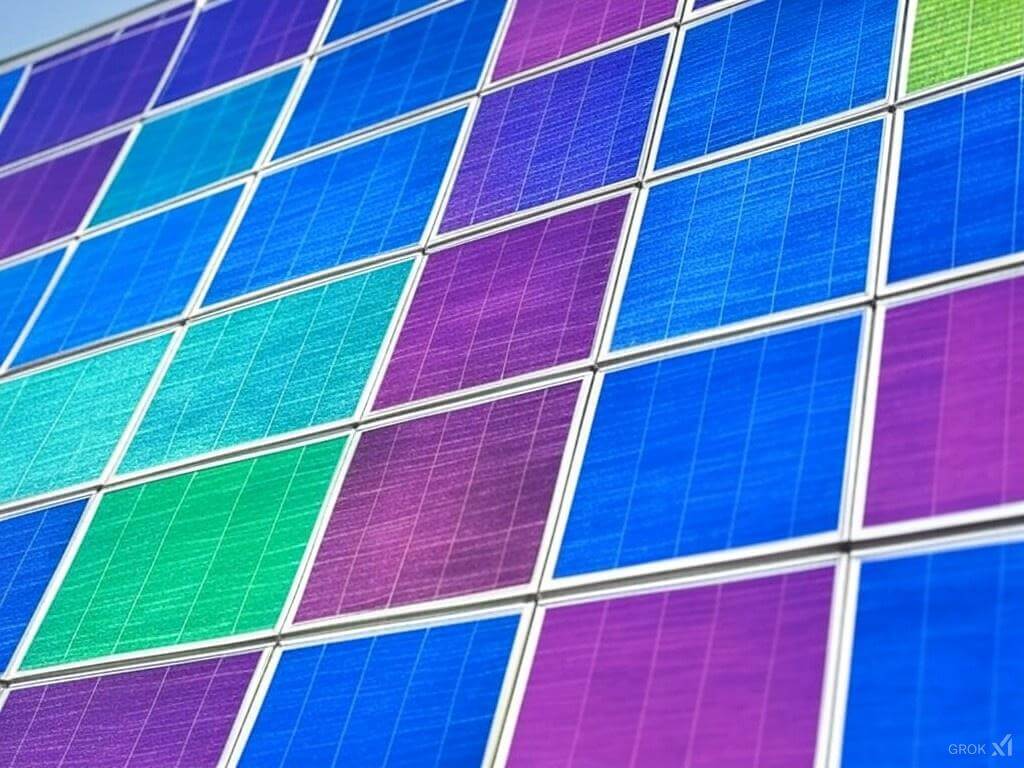Solar energy has come a long way from its early days of clunky panels and limited efficiency. Over the past few decades, it has emerged as one of the most promising sources of renewable energy, providing clean, sustainable power to homes, businesses, and even entire cities. With global investments in solar energy surpassing billions annually, this once-niche technology is now at the forefront of efforts to combat climate change and reduce dependency on fossil fuels.
However, the journey toward widespread solar adoption has not been without challenges. Issues like efficiency, cost, scalability, and integration into existing infrastructure have often slowed progress. This is where innovation plays a crucial role. Each technological breakthrough—from improving the efficiency of photovoltaic cells to reducing manufacturing costs—has brought us closer to realizing solar energy’s full potential.
Enter “Solar 2.0,” a new era of advancements that promises to reshape how we harness the sun’s power. From transparent panels that seamlessly integrate into windows to flexible solar technology that powers wearable devices, the next wave of innovation is making solar energy more versatile and accessible than ever before. This post will explore the emerging trends driving this transformation and how they’re setting the stage for a brighter, greener future.

Transparent Solar Panels
One of the most exciting advancements in solar technology is the development of transparent solar panels. Unlike traditional panels, which are opaque and often bulky, these innovative designs allow light to pass through while still capturing solar energy. They function using transparent photovoltaic (TPV) materials, which can harvest energy from specific wavelengths of light while letting visible light pass through.
Transparent solar panels have the potential to revolutionize urban energy use by seamlessly integrating into windows, glass facades, and even vehicle surfaces. Imagine skyscrapers where every window generates electricity or cars with solar-powered glass roofs. These applications could significantly increase the surface area available for solar energy collection, especially in densely populated cities where rooftop space is limited.
While the technology is still evolving, companies and researchers have made significant progress in improving the efficiency and durability of transparent panels. As these solutions become more commercially viable, they hold the promise of reshaping the way we think about energy generation and architectural design, blending sustainability with aesthetic appeal.

Perovskite Solar Cells
Perovskite solar cells have emerged as a game-changer in the field of renewable energy. Named after their unique crystal structure, perovskite materials offer remarkable advantages over traditional silicon-based solar cells. They are lightweight, flexible, and highly efficient at converting sunlight into electricity, making them ideal for a wide range of applications beyond rigid rooftop panels. From portable devices to integration with fabrics and vehicles, perovskite solar cells provide unparalleled versatility.
One of their most significant benefits is their potential for high efficiency at a lower production cost. Unlike silicon cells, which require energy-intensive manufacturing processes, perovskite cells can be fabricated using simpler techniques, including printing methods. This makes them an attractive option for scaling solar energy adoption in developing regions and innovative applications.
However, perovskite technology is not without challenges. Durability remains a primary concern, as these cells are sensitive to moisture, heat, and light exposure, which can degrade their performance over time. Scalability is another hurdle, with researchers working to transition from lab-scale prototypes to mass production without sacrificing efficiency or reliability.
Despite these obstacles, recent breakthroughs are bringing perovskite solar cells closer to commercial viability. Protective coatings and hybrid designs that combine perovskite with silicon are extending their lifespan, while advancements in manufacturing processes are paving the way for cost-effective production. As these developments continue, perovskite solar cells are poised to play a pivotal role in the next generation of solar technology.

Flexible and Wearable Solar Panels
Flexible and wearable solar panels are opening new frontiers in renewable energy by combining functionality with mobility. Unlike rigid panels, these thin and bendable alternatives can conform to various surfaces, making them ideal for applications where traditional panels are impractical. These innovations are transforming solar technology from being stationary to portable, enabling energy generation in previously inaccessible scenarios.
The potential applications of flexible solar panels are vast. They can be integrated into clothing, backpacks, or outdoor gear, allowing users to charge devices while on the move. Campers and hikers, for example, can benefit from lightweight, foldable panels that power essential electronics during off-grid adventures. Flexible panels are also finding their way into urban settings, being used in electric vehicles, boats, and even on curved surfaces like drones or building facades.
Wearable solar panels are particularly exciting for their ability to provide sustainable energy solutions for personal gadgets. From powering smartwatches to fitness trackers, they enhance convenience while reducing reliance on traditional charging methods. As wearable technology grows, flexible solar panels are becoming a key component in creating truly self-sufficient devices.
The primary challenge for these panels lies in improving their durability and efficiency. While they may not yet match the performance of rigid panels, advancements in materials science are helping to close the gap. Innovations like organic photovoltaics (OPVs) and thin-film technologies are pushing the boundaries of what flexible solar can achieve, making them more efficient, robust, and commercially viable.


Solar Skins and Aesthetic Panels
As solar technology becomes more mainstream, the demand for solutions that seamlessly integrate with everyday life has grown. Solar skins and aesthetic panels represent innovations designed to blend functionality with visual appeal. These advancements are transforming solar energy from a utilitarian choice into a design-friendly option that complements modern architecture and personal preferences.
Solar skins are a breakthrough in this space, offering customizable designs that mimic the appearance of traditional roofing materials or other patterns. These panels can be tailored to match shingles, tiles, or even artistic designs, making them an attractive choice for homeowners who want the benefits of solar power without compromising their property’s aesthetic appeal. This innovation has the potential to increase solar adoption in residential areas where visual impact has been a concern.
Aesthetic panels also extend to building-integrated photovoltaics (BIPV), where solar elements are incorporated directly into construction materials like glass facades or wall cladding. This approach allows entire buildings to function as energy-generating structures while maintaining sleek, modern designs. In urban environments, where rooftop space is limited, these solutions maximize energy harvesting potential without disrupting the visual harmony of the surroundings.
These technologies are also gaining traction in commercial applications, from integrating into corporate headquarters to retail environments, creating a green image for businesses. While the initial costs for solar skins and BIPV can be higher than traditional panels, ongoing advancements are making them more affordable and efficient, bridging the gap between style and sustainability.
AI-Optimized Solar Systems
Artificial intelligence (AI) is revolutionizing solar energy by enhancing efficiency, reliability, and overall system performance. Through data analysis and real-time decision-making, AI-powered solutions are helping maximize the output of solar panels while minimizing operational costs, making solar energy more effective and accessible.
One key area where AI excels is in optimizing panel efficiency. Machine learning algorithms analyze weather patterns, sunlight intensity, and shading to adjust panel angles or energy storage systems dynamically. This real-time adaptability ensures solar systems harvest the maximum amount of energy under varying conditions, significantly boosting their productivity.
Predictive maintenance is another groundbreaking application of AI in solar energy. AI systems can monitor the performance of individual panels, identifying potential issues before they lead to significant downtime. By detecting anomalies such as dirt accumulation, component degradation, or electrical faults, these systems reduce the need for manual inspections and ensure consistent energy production. This approach not only saves time and resources but also prolongs the lifespan of solar installations.
AI-driven energy management systems are also transforming how solar power is utilized. These systems can optimize energy distribution between solar panels, batteries, and the grid, ensuring efficient use of stored energy. In residential settings, smart solar grids powered by AI enable homeowners to monitor energy consumption, schedule appliances for off-peak times, and sell excess power back to the grid.
Examples of AI integration include Tesla’s Powerwall and SolarCity systems, which use AI to manage solar energy storage and distribution effectively. Similarly, large-scale solar farms employ AI to coordinate energy flow to the grid, balance supply and demand, and predict future energy needs based on historical data.
With AI continuing to evolve, its role in solar energy is expected to expand, driving innovation and making renewable energy more accessible to households and industries worldwide.

Space-Based Solar Power
Space-based solar power (SBSP) represents a visionary approach to harnessing the sun’s energy. Unlike traditional solar systems on Earth, SBSP involves capturing solar energy in space and transmitting it wirelessly back to Earth. This concept has the potential to overcome many of the limitations faced by ground-based solar power, such as weather dependency and night-time energy gaps.
In space, solar panels can operate continuously, free from atmospheric interference or the Earth’s rotation. This means they can capture and convert solar energy at levels impossible on the ground. The energy is then transmitted back to Earth using microwaves or laser beams, where ground-based receivers collect and convert it into electricity for distribution.
While still in the experimental stage, space-based solar power has garnered significant interest from both governments and private organizations. Countries like Japan and the United States, as well as companies like SpaceX, have explored the feasibility of SBSP systems. Recent technological advancements in lightweight materials, efficient energy transmission, and modular satellite construction are bringing this futuristic idea closer to reality.
The potential benefits of SBSP are immense. It could provide a stable, virtually limitless energy supply, particularly for regions with limited access to traditional renewable energy infrastructure. It also holds promise for powering remote locations, disaster-stricken areas, or even future space missions.
However, there are significant challenges to overcome. The cost of launching and maintaining space-based systems is high, and concerns about safety and energy transmission efficiency must be addressed. Despite these hurdles, space-based solar power remains an inspiring frontier, demonstrating how innovation can push the boundaries of renewable energy.
Conclusion
The advancements in solar technology showcased in this new era of Solar 2.0 are transforming how we generate, store, and use energy. From transparent panels and flexible designs to AI-driven optimization and the ambitious vision of space-based solar power, these innovations are making solar energy more versatile, efficient, and accessible than ever before.
Each breakthrough brings us closer to a world where renewable energy dominates, reducing our dependence on fossil fuels and supporting the fight against climate change. These technologies not only expand the possibilities for clean energy but also inspire industries and individuals alike to adopt more sustainable practices.
As we embrace these innovations, it’s essential to support continued research, development, and collaboration across sectors to overcome existing challenges and unlock the full potential of solar energy. The future of renewable energy is bright, and Solar 2.0 is paving the way for a cleaner, more sustainable tomorrow.
FAQ: Solar 2.0 – Emerging Trends Shaping the Future of Renewable Energy
Q: What is Solar 2.0?
A: Solar 2.0 refers to the next generation of advancements in solar technology. It encompasses innovations like transparent panels, flexible solar technology, AI-optimized systems, and even space-based solar power, all aimed at improving efficiency, accessibility, and versatility.
Q: How do transparent solar panels work?
A: Transparent solar panels use materials that allow visible light to pass through while capturing and converting specific wavelengths of sunlight into electricity. They are ideal for applications like windows, vehicle surfaces, and building facades.
Q: What makes perovskite solar cells unique?
A: Perovskite solar cells are lightweight, flexible, and highly efficient at converting sunlight into electricity. They are cheaper to manufacture than traditional silicon cells and can be used in a wide variety of applications, including wearable devices and curved surfaces.
Q: Are flexible solar panels as efficient as traditional panels?
A: While flexible solar panels currently have lower efficiency than rigid silicon panels, they are rapidly improving. Their portability and ability to integrate into unconventional surfaces make them valuable for off-grid and wearable applications.
Q: What role does artificial intelligence play in solar energy?
A: AI enhances solar panel efficiency by optimizing energy capture, predicting maintenance needs, and managing energy distribution. AI-powered systems ensure maximum output while minimizing operational costs, benefiting both residential and large-scale solar installations.
Q: What is space-based solar power, and how does it work?
A: Space-based solar power involves capturing solar energy in space, where sunlight is constant and unobstructed, and transmitting it wirelessly back to Earth via microwaves or lasers. It offers the potential for a continuous, abundant energy supply.
Q: What are the challenges of adopting these new solar technologies?
A: Challenges include high initial costs, durability concerns (e.g., with perovskite cells), scalability issues, and the complexity of implementing systems like space-based solar power. However, ongoing research is addressing these hurdles.
Q: Are solar skins and aesthetic panels widely available?
A: While not yet as common as traditional solar panels, solar skins and aesthetic panels are becoming more accessible. They are particularly appealing for residential and commercial applications where design and aesthetics matter.
Q: How can I get started with solar energy?
A: To start using solar energy, evaluate your energy needs, budget, and property. Consult with a reputable solar installer to explore options like rooftop panels, BIPV, or flexible solar solutions tailored to your requirements.
